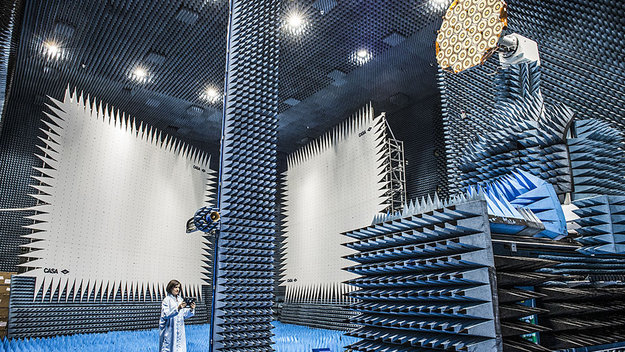The white surfaces in front of the ‘anechoic’ blue background are reflectors that pass signals from an illuminating antenna to the antenna under test. The reflectors transform the spherical expanding rays of the illuminator into a straight signal beam as if the illuminator were located far away in space.
To increase its capabilities, the Compact Payload Test Range (CPTR) was recently equipped with a state-of-the-art Near-Field Scanner (NFS) to measure the electromagnetic fields closely surrounding a test antenna. Via mathematics, the equivalent radiation at large distances is calculated.
This new set-up and test technique allow the measurement of larger antennas (up to 8 m in diameter) over a larger frequency range (0.4–50 GHz). Its first assignment will be to characterise the radiated performance of the next Galileo satellites ahead of their launch later this year.
Inside ESTEC’s Test Centre, the hybrid CPTR/NFS is equipped to test large antennas or complete satellites in cleanroom conditions. Its smaller Laboratory counterpart, the Compact Antenna Test Range, is also available to test smaller antennas quickly and easily in standard ‘ambient’ conditions.
http://www.esa.int/Our_Activities/Technology/Zone_of_silence









